MONO-STEREO SETUP FOR PARABOLIC MICROPHONE
People often debate the use of mono or stereo microphones inside a parabolic dish. This I have already mentioned here.
In summary: some prefer a mono recording for a “clean” use with spectrogram analysis, others prefer to obtain a stereo recording to have a pleasant soundscape. However, a stereo recording does not exclude the possibility of being able to use only one channel of the two to still obtain a good spectrogram.
Personally, I have always thought that the best thing would be to have both opportunities.
This is why I thought of designing and manufacturing (for my personal use) a Mono/Stereo microphone baffle to be inserted in a parabolic dish, which gives the possibility to separatly connect one of the two configurations when using a two-channel recorder, or both configurations at the same time if using a mixer/recorder with at least three channels..
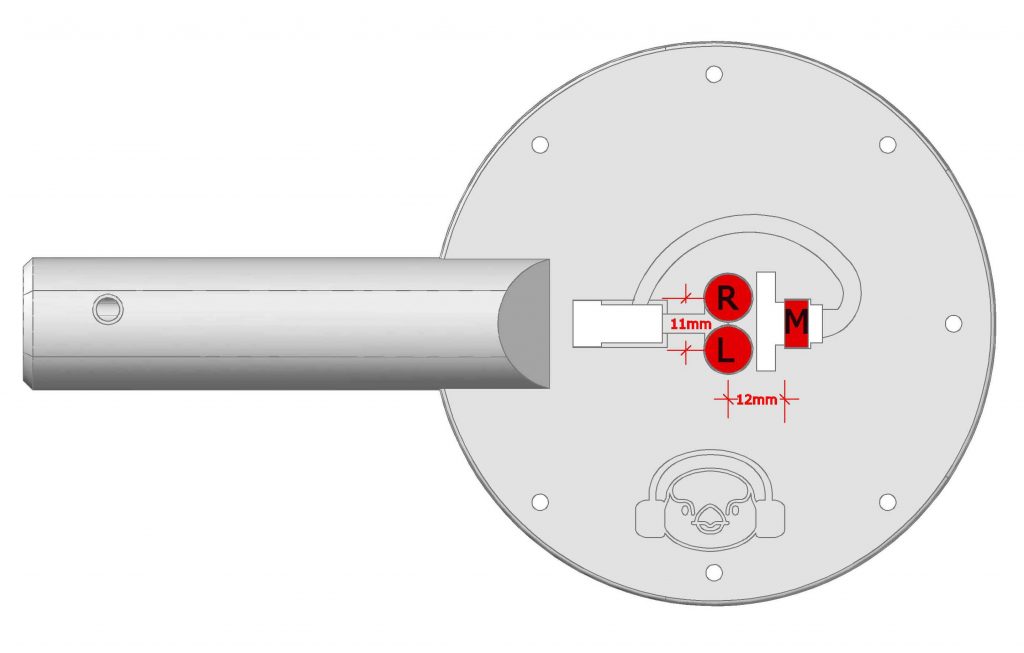
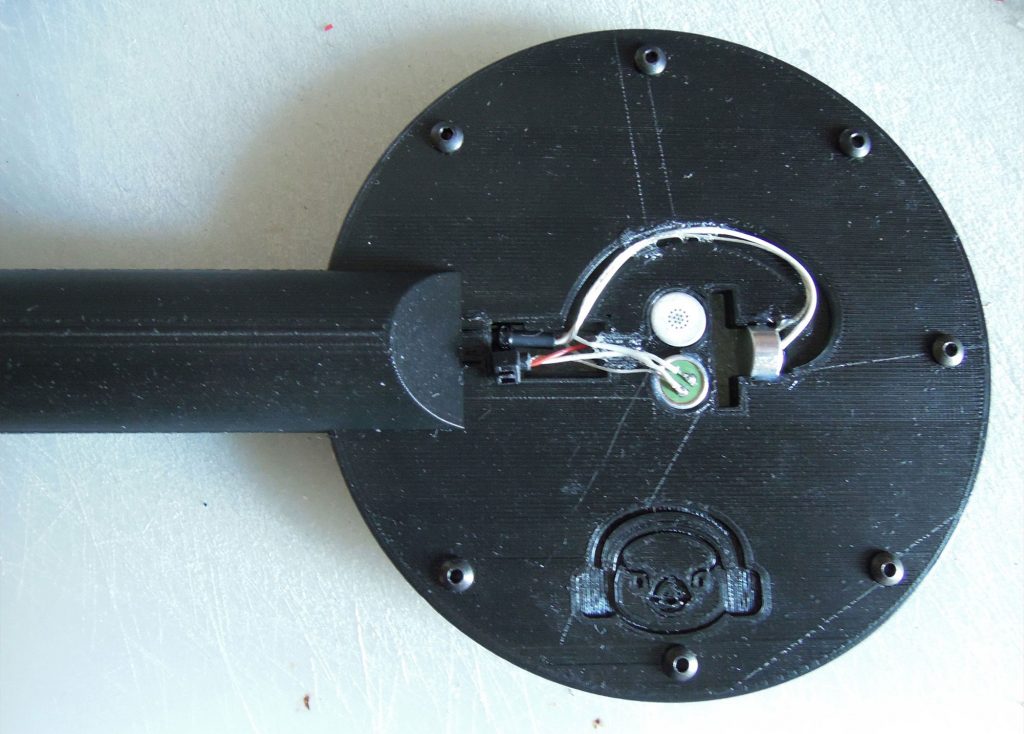
Above the project drawing of the baffle and below the 3D printed realization of the microphone assembly.
Stereo capsules L-R; M = mono capsule facing towards the inside of the dish. __________________________________________________________________________________________________
UPDATE:
I performed a Mono vs. Stereo test on Common Nightingale song.
I used a Sound Devices 302 connecting channels 1-2 to the 1+1 AOM 5024 capsules stereo baffle inserted in a 53 cm parabolic dish, while to the third channel is connected the single AOM 5024 capsule (see the picture above).
I first recorded with only the channel 3 signal to obtain a mono recording, then with the two channels 1 and 2 linked in stereo mode. As a recorder I used a Tascam DR05x connected via a splitter cable to the OUT tape of the SD 302.
Common Nightingale Luscinia megarynchos song – First MONO, then STEREO
______________________________________________________________________________________________________
I asked about adding the two signals Mono+Stereo to Jules Ryckebusch who replied:
“The signals are adding. So that gives you, in theory 2X signal that works out to 6dB. It’s what people do when putting four mics in an array too. The correlated signal adds 6db and the uncorrelated noise only adds 3dB so there is an improvement in signal to noise ratio”.
Here a quick audio test using a metronome
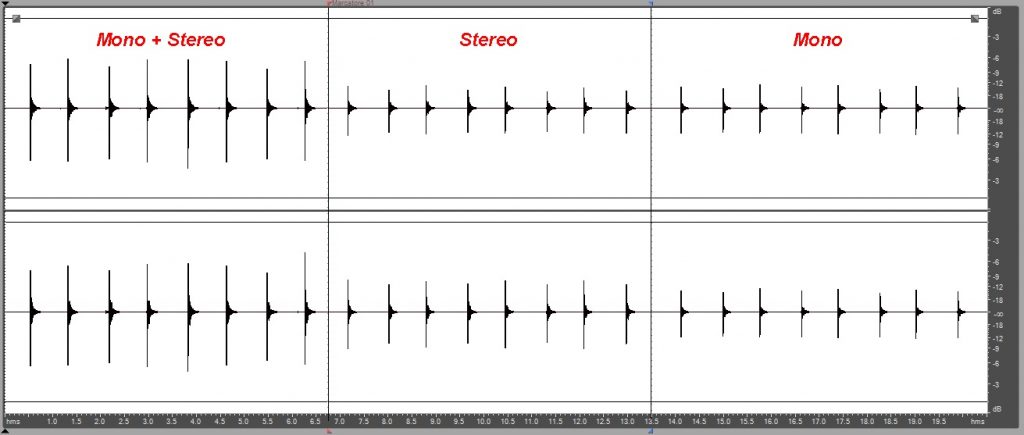
below European robins at dawn (mono + stereo – Sound Devices 302 mixer + Tascam DR05X)
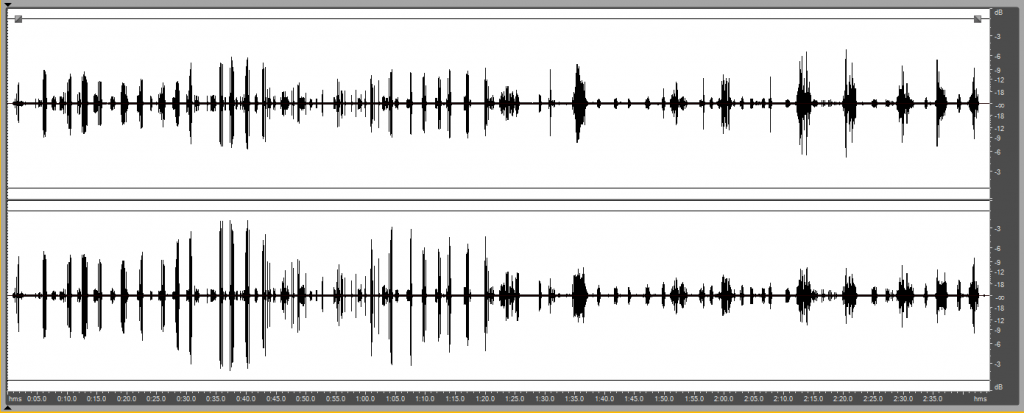
DODOTRONIC HISOUND MONO EVO 4 AOM CAPSULES
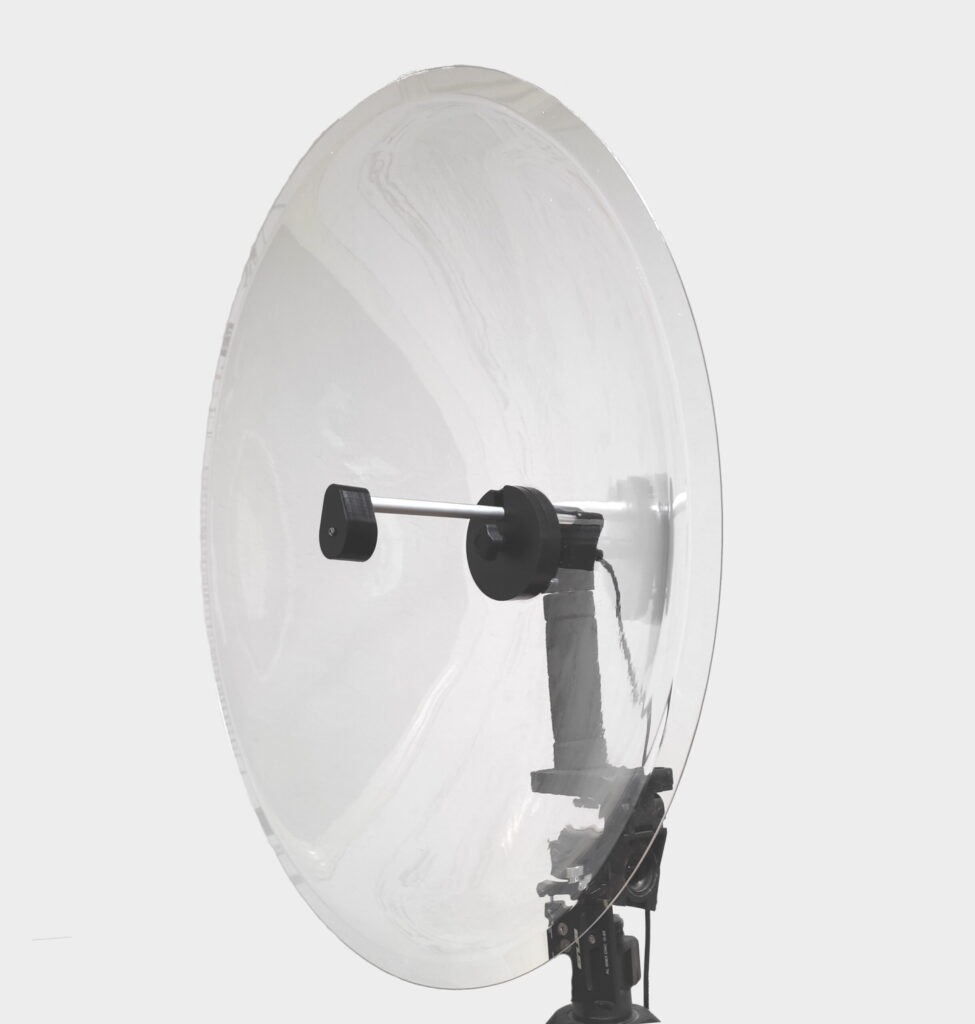
A few days ago, I received from Ivano Pelicella, owner of Dodotronic, the new HiSound Mono EVO parabolic microphone, equipped with 4 x AOM capsules. I report here my impressions of use, as well as some practical tests carried out both with a metronome comparing this Mono EVO version with the Stereo 1+1 AOM capsules version, and using the Mono EVO live with some target bird species (more a little cricket).
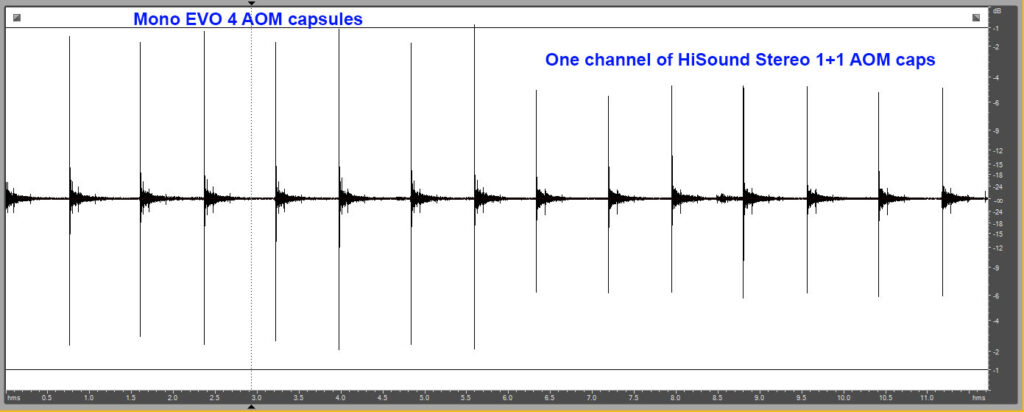
Below are recordings of various species, including Long-tailed Tit, Common Nightingale, Marsh Cricket, Common Pheasant, Blackbird.
I am not a fan of mono type recording, and I love stereo recording, whatever it is. That said, let’s move on to analyze what emerged from the use of this new parabolic microphone.
The first highlight is the gain of 4 dB using the Mono EVO compared to the well-performing HiSound Stereo. This is logical since in the stereo version the signal received by the single side capsule positioned on the baffle disc comes roughly from half a parabolic disc. In the mono version, the signal comes from the whole parabolic dish, so there is a doubling of the signal compared to the version with the stereo separator disc. However, it must be considered that this separator disc also has a signal increase function following the PZM effect (Pressure Zone Microphone).
Therefore, for a use that does not concern the recording of Soundscapes, this Mono EVO version is particularly interesting if you want to make recordings to be used later for some specific study involving sonographic analysis (spectrograms etc.). Furthermore, users interested in so-called NFC (Night Flight Calls) of birds, will certainly benefit of this specific microphone configuration.
In this few days, I tried to make recordings including the widest range of frequencies.
So on Long-tailed Tit (frequencies about 7000 Hz), Common Nightingale (to consider the peaks that can go into distortion, instead they hold perfectly here), Marsh Cricket (about 20 meters away, a very small cricket of 5-7 mm, with frequencies around 6 KHz), flight of Common Pheasant (to stay also in the medium-low frequencies).
Finally the Common Blackbird, a classic test as far as I’m concerned.
I just have to test the Mono EVO dish in the short term on particular small cicadas with an almost ultrasonic call…
ZOOM AM7 MID-SIDE IN PARABOLA
I tested a ZOOM AM7 Mid-Side microphone for Android, by inserting it inside a 53 cm diameter paraolic disc, using a USB-C Male/Female cable.
For this Recording the REC Volume wheel was set almost to its maximum, at the 9 of 10 Level position, so part of the background noise is due to the very high setting. There is a bit of handling noise.
Samsung A30s – cable USB-C female to male – Zoom AM7 Android Microphone
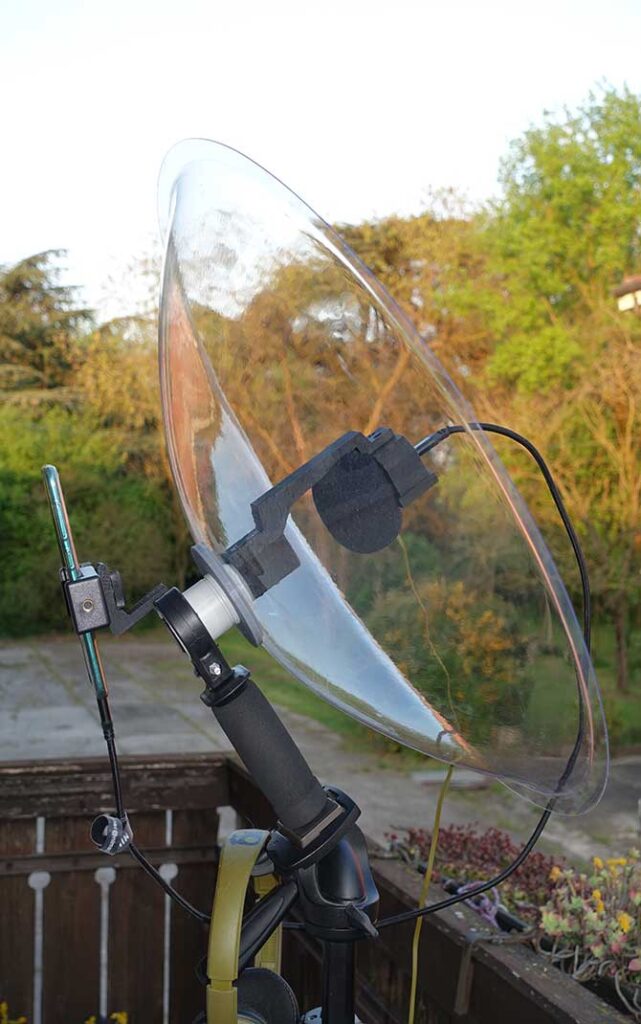
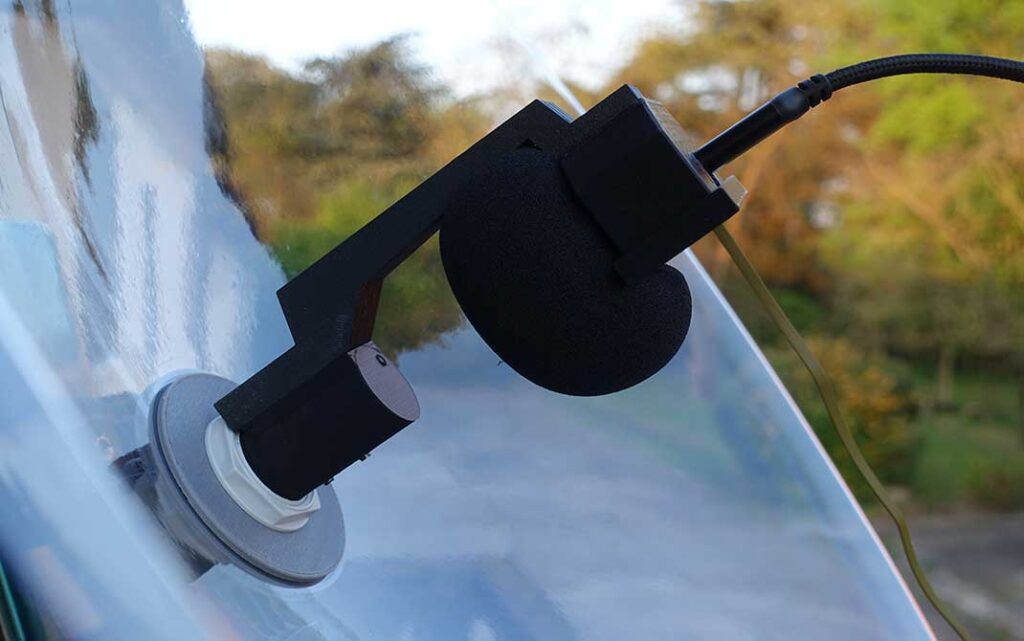
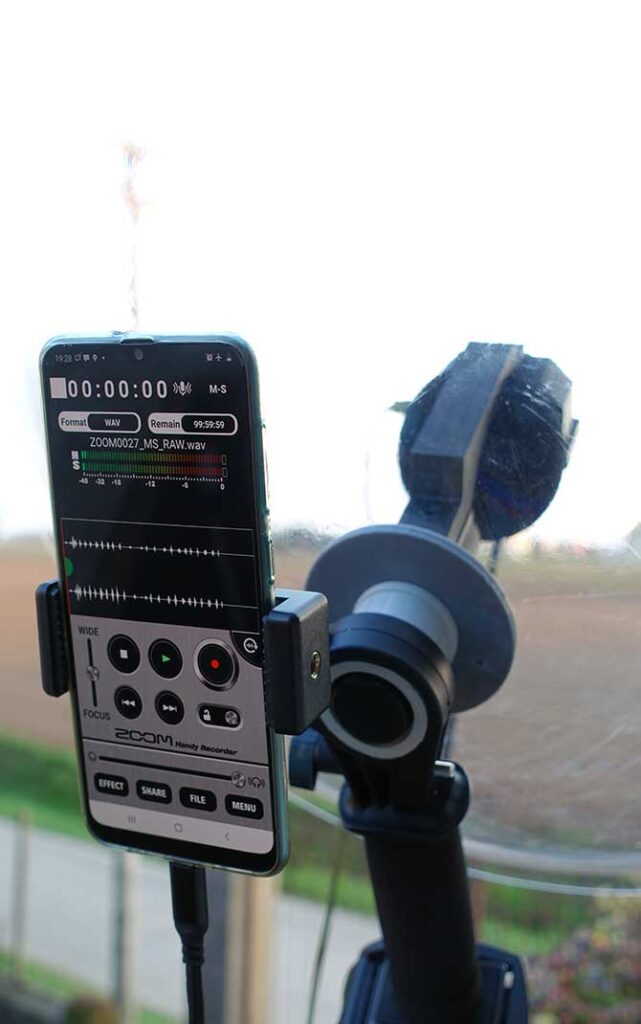
Below are some pics of how I made, through 3D printing, the casing to insert the ZOOM AM7 Mid Side microphone.
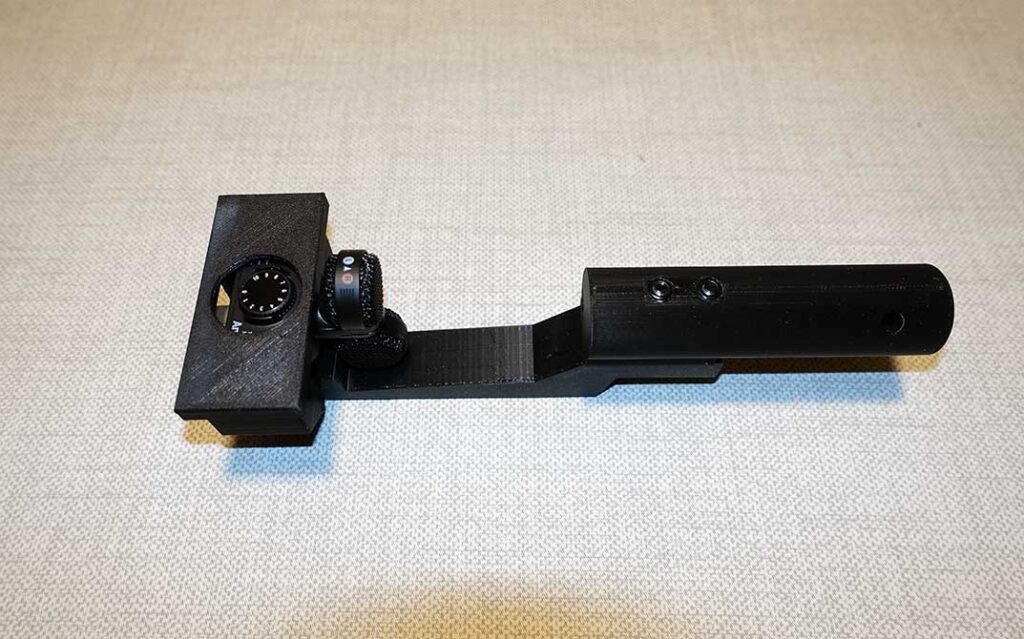
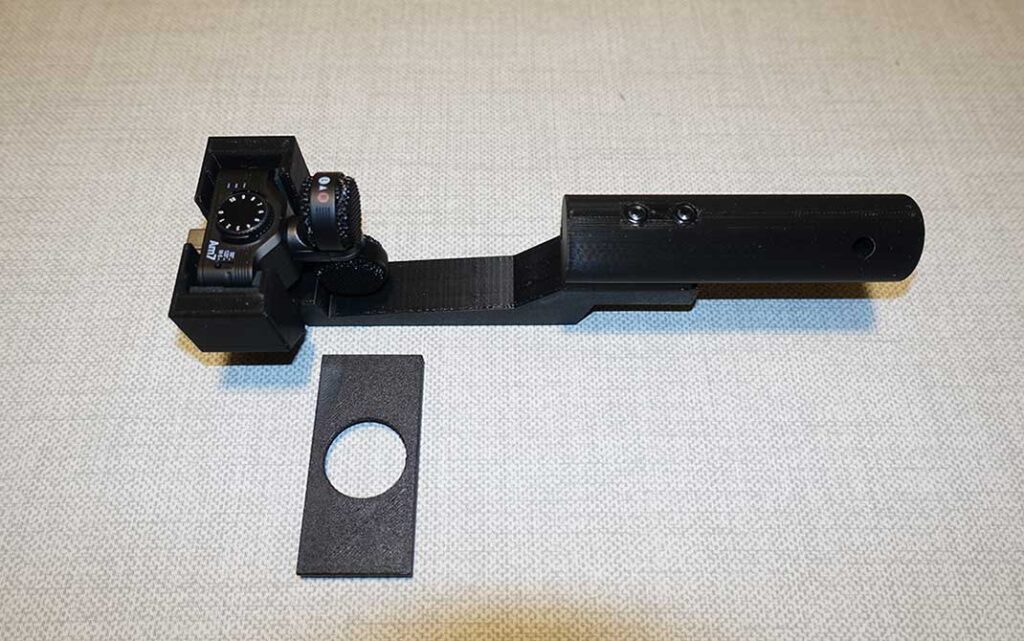
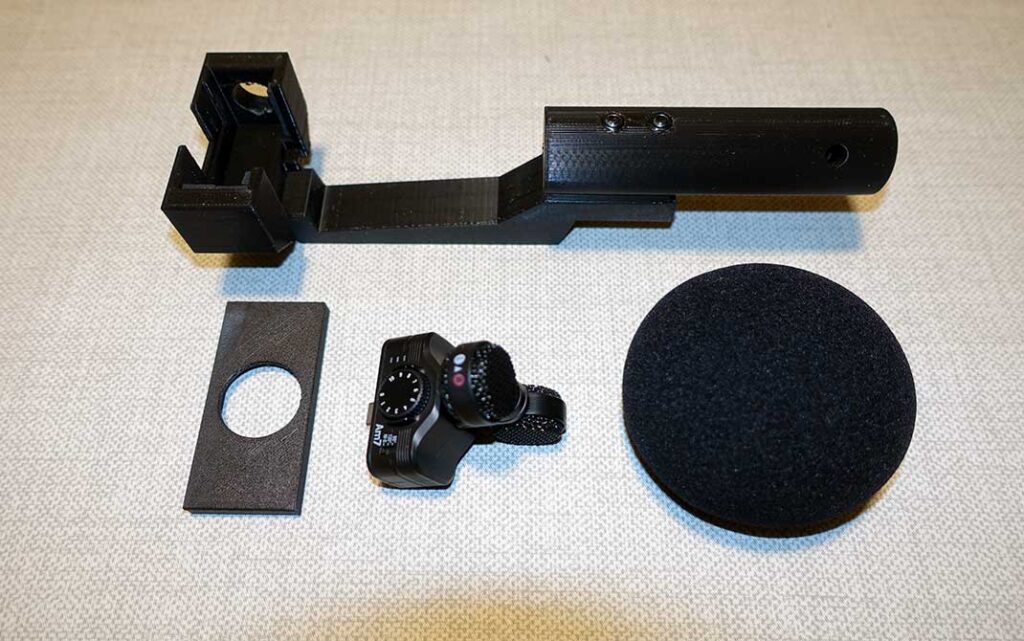
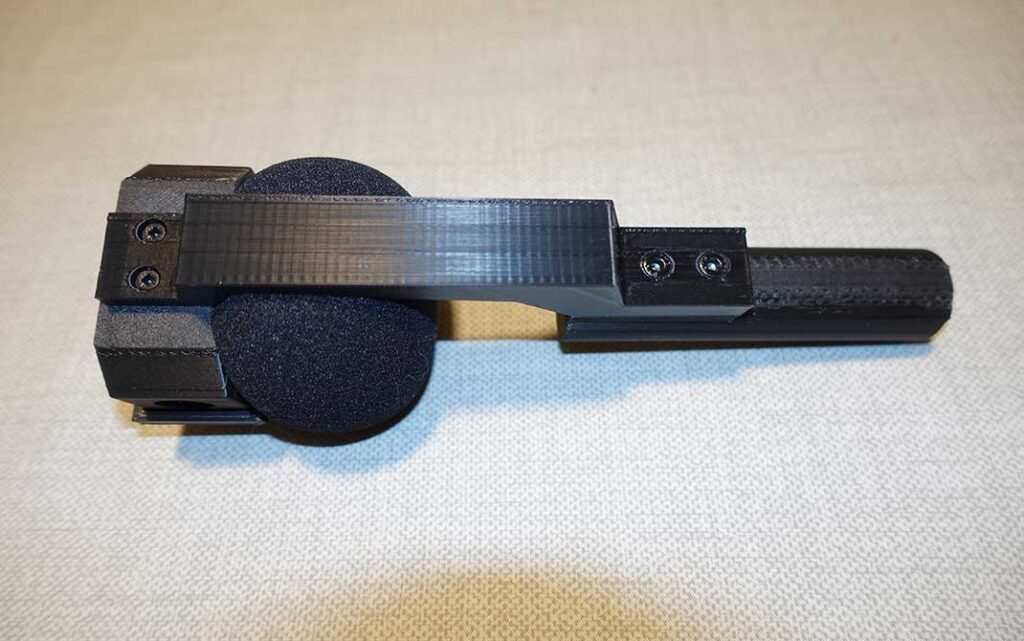
Rana Latastei calls
Italian Agile Frog
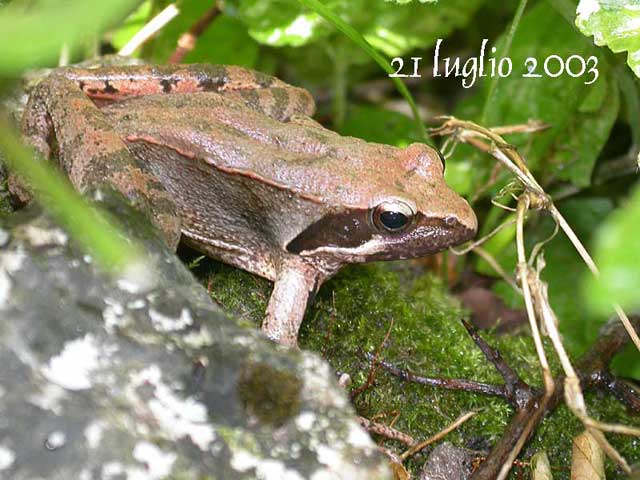
Please refer to the paper below in downloadable pdf
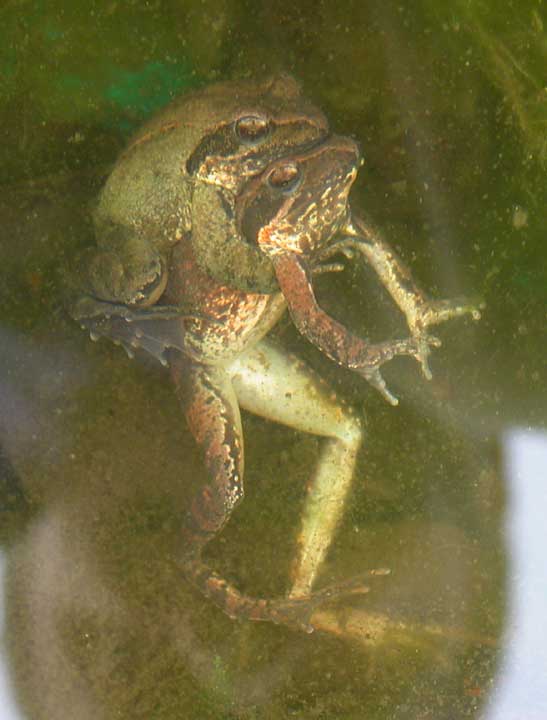
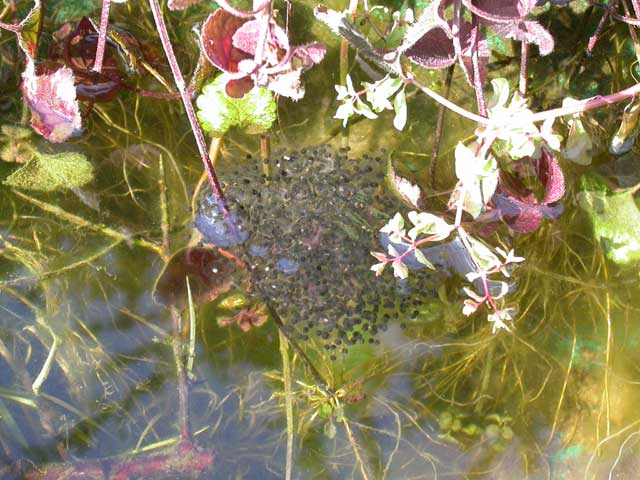
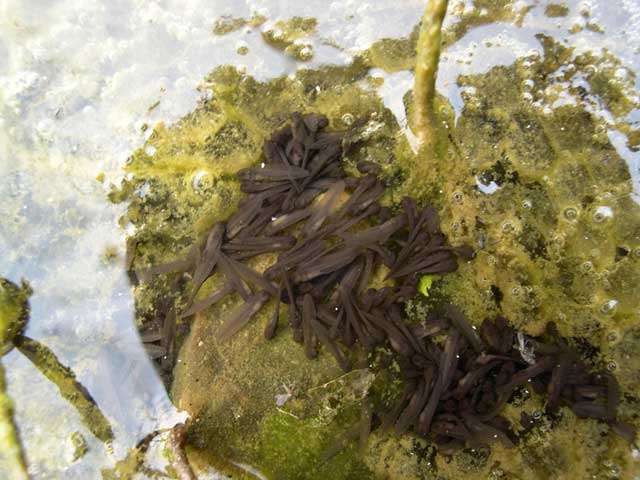
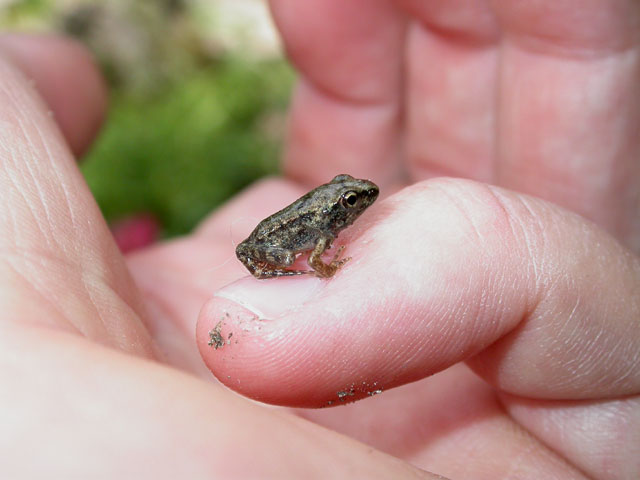
Microphones Test AOM 5024 -T-bone sc140 – Rode NT1a – AT3032 – Sennheiser ME62 – Sennheiser ME66
I ran a practical test for six different types of microphone, using a Tascam dr100 mk3. The AOM5024 capsule was inserted in the center of a 12 cm diameter Plexiglas disc, while the other capsules are each related to its own microphone, as shown in the picture. The analog metronome was about 3 meters away from the microphones.
Below the list of the six types of microphone, with in brackets the dB added or subtracted to equalize the levels; as a reference I took the Rode NT1a signal.
No filter applied to the low frequencies.
AOM 5024 (-7dB)
T-BONEsc140 (+2dB)
RodeNT1a
AT3032 (+2dB)
Sennheiser ME62 (-4dB)
Sennheiser ME66 (-7dB)
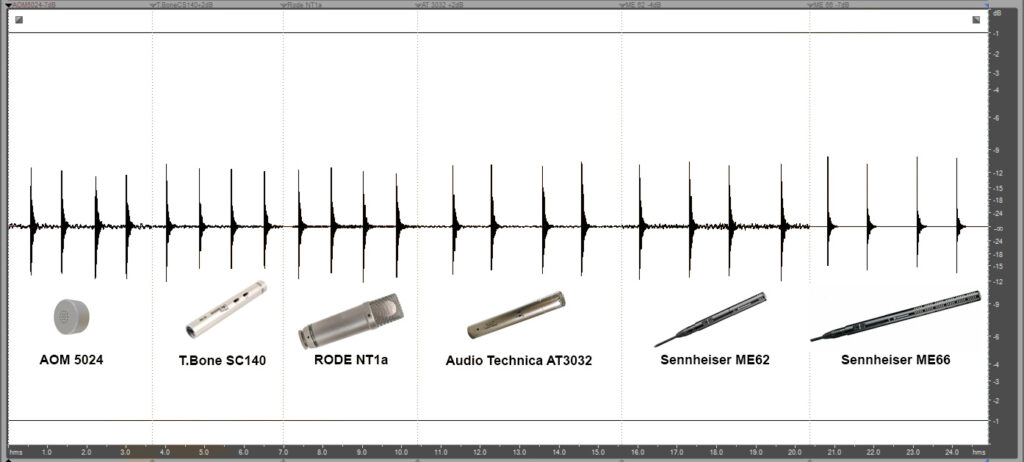
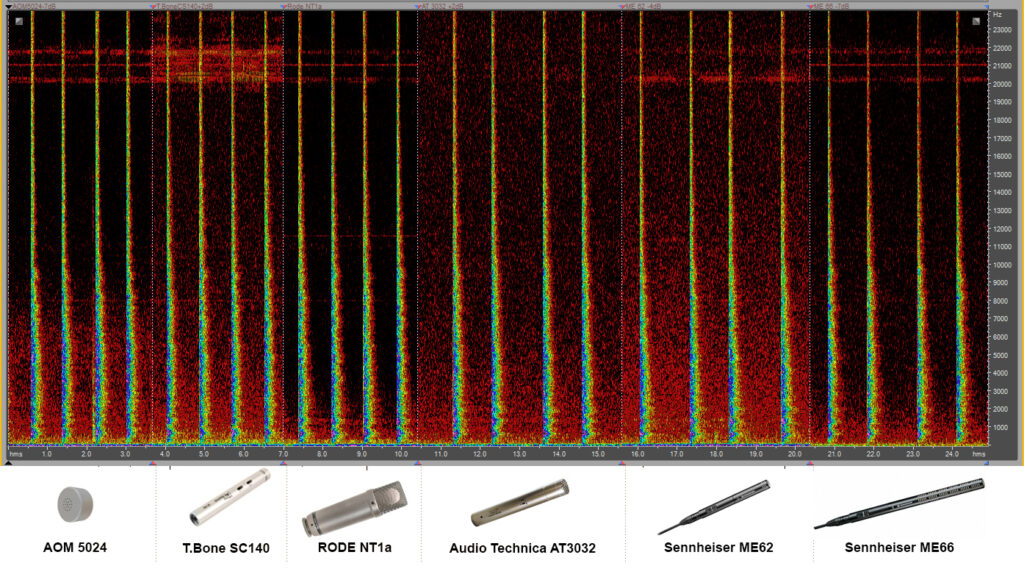
The high frequency band from 20KHz and beyond, is related to the Modem signal that I inadvertently left on during the test: perhaps a future opens up for the T.BoneSC140 to be able to record the songs of some orthoptera in the high frequency band, with at least 96 KHz of sampling rate?
BROWN SHRIKE – LANIUS CRISTATUS – AVERLA BRUNA – 2003 JANUARY 12 – THE FIRST WINTERING IN EUROPE
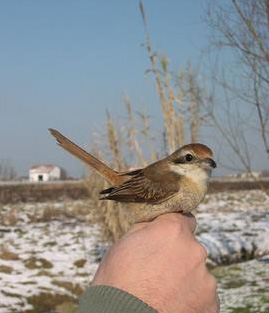
First record for Brown Shrike Lanius cristatus in Italy – La Tomina – MODENA 2003, January 12
This recording was performed at La tomina, in the municipality of Mirandola (MO) – Italy. I used a Telinga Parabolic Microphone Twin Science and a Sony Minidisc MZR50. The recording was filtered for the low frequencies.
See: Giannella C., Gemmato R., Pesente M. & Longhi D. 2003. The Brown Shrike in Italy. – the first wintering in Europe. Birding World 16(3): 126-128.
Carlo Giannella, Raffaele Gemmato, Marco Pesente and Daniele Longhi
BIRDING WORLD Volume 16 Number 3 – 126-128Download
Since that morning of January 12, 2003, the Shrike had been spotted by other observers for a few days already, however it had been mistaken, from the other, also for a Red-Backed Shrike, Lanius collurio. As soon as I arrived on the spot, I was pleased to notice that I was alone. I was lucky enough to be able to observe the bird well from close range, while it was eating a little mouse that it had previously stuck on a thorn of the bush where it was having her meal. The ground around it was completely covered with snow. I started making a movie with an old video camera that I had taken with me; back then there was still no possibility to make movies with reflex cameras, so I had to settle for what I had available, an old Sony Video8.
As soon as the meal was over, the shrike began to sing emitting a sort of sub-song; I immediately put to work the Telinga Twin Science parabolic microphone combined with the Sony MZ R50 MiniDisc.
I also had time to take some photos, testifying to the species, or at least of what I thought it might be a species, to me an Isabelline Lanius isabellinus Isabelline Shrike.
This done, I went to what was then the Ringing Center called “La Tomina”, due to the location where the research station was located. There I met the friends of mine Raffaele Gemmato and Carlo Giannella, while they were carrying out maintenance work on the mist nets. I told them what I had seen and what I had done, I asked if they had tried to capture that bird in order to verify its species and then ring it. To the negative response, I stimulated in them the desire to try to trap the bird, saying that I had with me both the audio recording just performed, and a small speaker to try to call it near the mist nets through its own song using the playback. We looked each other in the eyes and, in no time at all, we took a couple of mist nets and went to the place of my last sighting, we quickly mounted the mist nets and we turned on the the playback through the same MiniDisc I used for the recording.
If I say that it was four minutes before having her jumped into the net exactly where the call came from playback … well I don’t exaggerate!
Happy to have achieved what we had set for ourselves, we quickly disassembled the mist nets and went to the ringing center, where we performed the ritual operations: measurements, control of the moulting status of the plumage, of the body fat, but above all of the identification of the species. This last thing was by no means taken for granted, even if at the time we thought of attributing it, as a species, to an Isabelline Shrike, if only for a calculation of probability, compared to other probable species. After taking some photos of the specimen in hand, in order to have the greatest number of details subsequently available, we released the subject, not before putting her well-deserved ring on its!
Each of us has returned to his home. I more than the others were away from home, about 60 kilometers. As soon as I arrived, I began to consult various publications, including obviously what was then (but in some respects still is) our bible: the Cramp! Look and look, the accounts did not add up; there was something in the shape, and therefore in the measures, of the tail which did not match what we believed to be the kind of belonging of the subject just checked, namely having it Isabelline Shrike. “Do you want to see that it’s about…”, I don’t have time to think that the phone is ringing. He is Carlo Giannella, who promptly manifests their (his and Raffaele Gemmato’s) doubts, which coincidentally follow mine; we confront each other for a moment to express our perplexities, but also to advance what, separately but I would say at the same time simultaneously, we have formulated as the next specific hypothesis: a Brown Shrike!
And this was it!!!
Photos and video by Marco Pesente
Versione in italiano
Prima di quella mattina del 12 gennaio 2003, l’Averla era stata avvistata, da altri osservatori, già da alcuni giorni, tuttavia era stata scambiata, tra le altre, anche per un’Averla piccola, Red-Backed Shrike, Lanius collurio. Appena arrivato sul posto, notai con piacere che ero da solo. Ebbi la fortuna di poterla osservare bene da distanza ravvicinata, mentre stava mangiando un piccolo roditore che aveva preventivamente infilzato su di una spina del cespuglio dove stava consumando il pasto. Il terreno all’intorno era completamente coperto di neve. Iniziai a filmare con una vecchia videocamera che avevo preso con me; all’epoca non c’era ancora la possibilità di riprendere filmati con le fotocamere reflex, per cui mi dovetti accontentare di ciò che avevo a disposizione, una vecchia Video8 Sony.
Non appena terminato il pasto, l’Averla iniziò a cantare emettendo una sorta di sottocanto; immediatamente misi all’opera il microfono parabolico Telinga Twin Science abbinato al MiniDisc Sony MZ R50.
Ebbi anche il tempo per scattare qualche foto, a testimonianza della specie, o perlomeno di quella che pensavo potesse trattarsi come specie, ossia un’Averla isabellina, Lanius isabellinus.
Ciò fatto, mi recai presso quello che allora era il Centro di Inanellamento denominato “La Tomina”, per via della località in cui veniva a trovarsi la stazione di ricerca. Lì incontrai gli amici Raffaele Gemmato e Carlo Giannella, mentre stavano effettuando dei lavori di manutenzione alle reti. Dissi loro quello che avevo visto e ciò che avevo fatto, chiesi se avessero provato a catturarla per verificarne la specie e quindi inanellarla. Alla risposta negativa, stimolai in loro la voglia di provare a prendere la bestia in questione, dicendo che avevo con me disponibili, sia la registrazione audio appena eseguita, sia un piccolo altoparlante per provare a richiamarla in prossimità delle mist nets tramite il suo stesso canto. Ci guardammo negli occhi e, in men che non si dica, prendemmo un paio di mist nets, ci recammo sul posto dell’ultimo mio avvistamento, stendemmo velocemente le reti e mettemmo in funzione il richiamo in playback tramite lo stesso MiniDisc utilizzato per la registrazione.
Se dico che passarono quattro minuti prima che l’averla si tuffasse in rete esattamente da dove proveniva il richiamo in playback… beh non esagero!
Felici di aver ottenuto ciò che ci eravamo prefissati, smontammo velocemente le reti e andammo presso il centro di inanellamento, dove compimmo le operazioni di rito: misurazioni, controllo dello stato di muta del piumaggio, del grasso corporeo, ma soprattutto dell’identificazione della specie. Quest’ultima cosa non fu per nulla scontata, anche se lì per lì pensammo di attribuirla, come specie, all’Averla isabellina, non fosse altro per un calcolo di probabilità, rispetto ad altre probabili specie. Dopo aver scattato alcune foto all’esemplare in mano, per avere il maggior numero di particolari successivamente disponibili, rilasciammo il soggetto, non prima di avergli apposto il suo meritato anellino!
Tornammo ognuno alla propria abitazione, io più degli altri mi trovavo lontano da casa, a circa 60 chilometri. Non appena arrivato, mi misi a consultare varie pubblicazioni, tra cui ovviamente quella che allora era (ma per certi aspetti ancora adesso lo è) la nostra bibbia: il Cramp! Guarda e riguarda, i conti non tornavano; c’era un qualcosa nella forma, e quindi nelle misure della coda, che non combaciava con quella che ritenevamo essere la specie di appartenenza del soggetto appena controllato, ossia l’Averla isabellina. “Vuoi vedere che si tratta di…”, non faccio in tempo a pensarlo che squilla il telefono. E’ Carlo Giannella, prontamente mi manifesta i loro (suoi e di Raffaele Gemmato) dubbi, che guarda caso ricalcano i miei; ci confrontiamo un attimo per manifestarci sì le perplessità, ma anche per avanzare quella che, separatamente ma direi al tempo stesso simultaneamente, abbiamo formulato come successiva ipotesi specifica: un’Averla bruna, Lanius cristatus!!!
E così fu!
Rode NT1a ORTF Vs. Audio Technica AT3032 in SASS
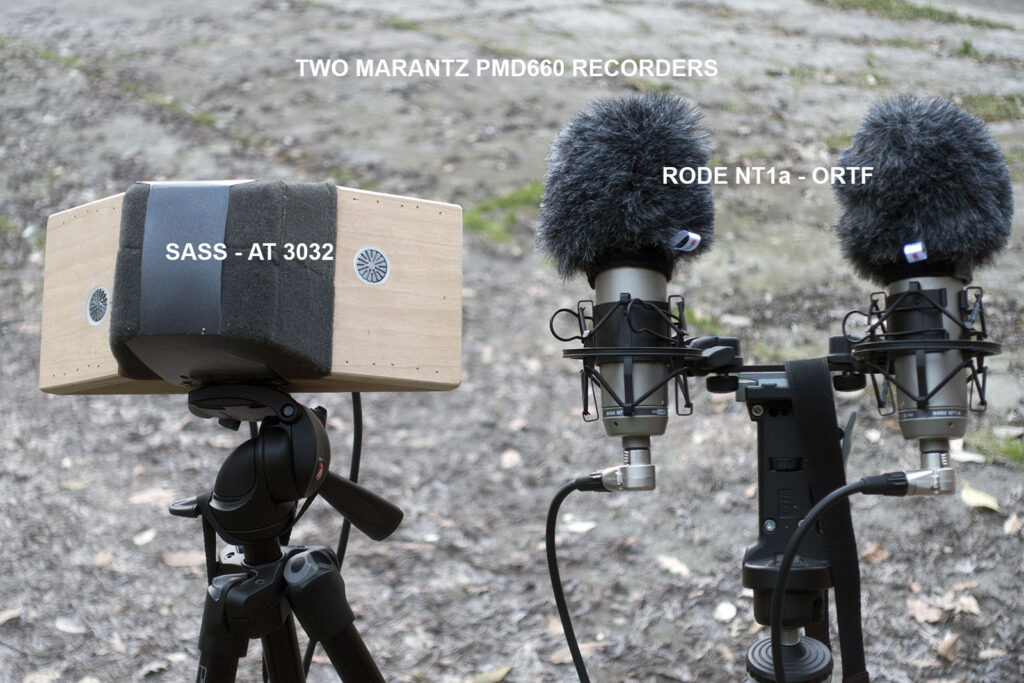
Below a comparison between two recordings made simultaneously using two Marantz PMD660 recorders.
These are calls from a communal roosting, mainly consisting of about 200 Western Cattle Egret, with also the calls of European Robin, Blackbird and Magpie (At 1:15 a car passes on the back of the recorders).
No high pass filter was used. To match the recordings, +3 dB are applied to NT1a recording.
By listening with headphones, to start both tracks at the same time and then mute them alternately by pressing the button on the right side with the volume symbol.
Comments are welcome!
My Favorite Portable Field Recordes Over the Years
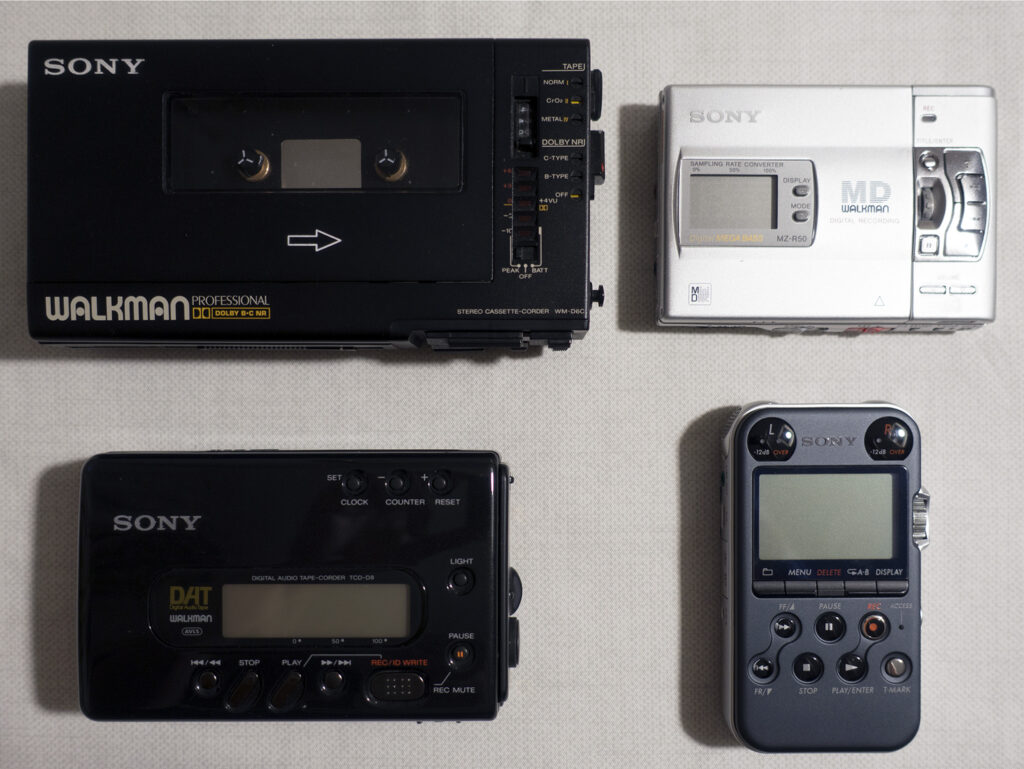
top left: Analog Cassette recorder WM-D6C – top right: MiniDisc Digital recorder MZ-R50
bottom left: DAT Digital Audio Tape recorder TCD-D3 – bottom right: Digital Audio recorder PCM-M10
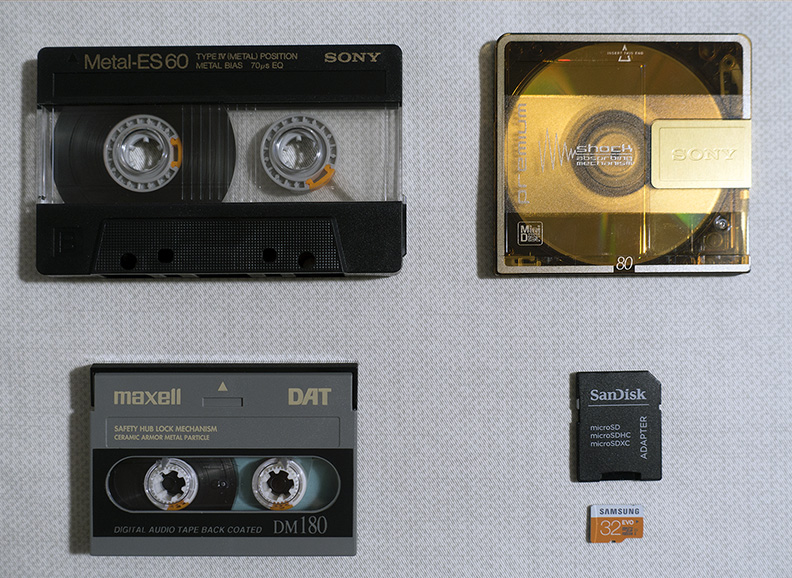
Storage media used by the above recorders
During about forty years of recording, I have used various types and models of recorders, from the first bulky analog models, such as Uher 4000 series, to the latest digital recorders equipped with SD or micro SD solid state memory cards. Of the later I own several models of various brands, such as Sony, Tascam, Marantz, Olympus, Zoom, Roland, Fostex… perhaps I forget some brand…ah, the Philips DVT 7500 (what a disaster!). Although I also have large recorders equipped with solid state memory, I have always preferred compactness, sometimes losing a few decibels of signal due to this.
Since I was using cassette decks, my favorite was the Sony WM-D6, quickly replaced with the WM-D6C model (see the photo above), although the Dolby C equipment was of no use for recordings in nature, as well as the Dolby B of the previous model was not.
Later came the era of the Digital Audio Tape, the DAT, of which the first model I bought was the TCD-D3, a really well made item by Sony, then replaced with the TCD-D7 and immediately after with the TCD-D8, visible in the photo, which I still have jealously!
Then came the Minidisc, also for this I bought several models, but my favorite for field recording remained the Sony MZ-R50, also visible in the photo.
Finally, with the advent of solid state recorders that record on memory cards, from Compact Flash Cards to tiny Micro SD Cards, there has been a succession (as well as a collection) of models. Among all, my favorite always remains a Sony model, the PCM-M10, which in everyday use I prefer to the one that at today (January 2021) I believe to be the best of all portable solid state recorders ever built: the Tascam DR100 mk3.
All this by giving up the XLR 48V phantom power connection, in favor of the less resistant, but more compact, Jack 3.5 mm Plug In Power feeding microphone system.
MY FIRST PARABOLIC MICROPHONE SYSTEM!
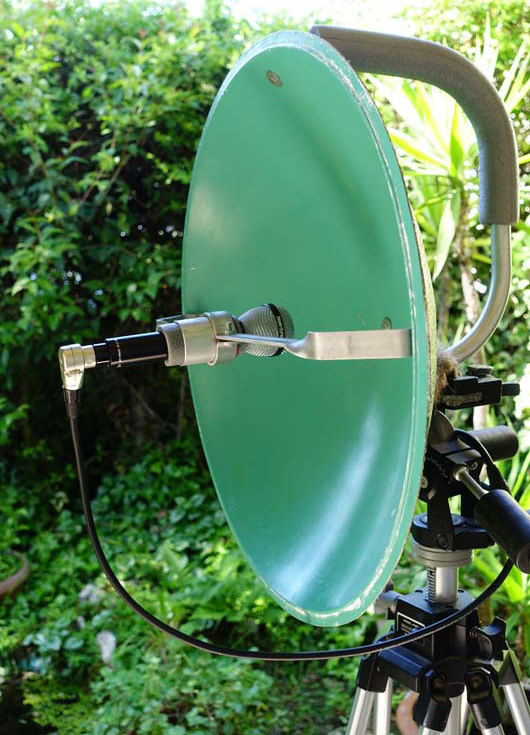
This was my first parabolic microphone system: a 53 cm Rochè fiberglass dish that I bought directly from Jean Claude Rochè‘s Oiseaus Musicien (now Sittelle) in the early 1980s.
The parabolic dish is quite heavy when compared to the current polycarbonate and PetG dishes. I paired one of the best dynamic microphones out there at the time, the Beyerdynamic M88N(C). This Hypercardioid microphone, with slight variations (M88-TG), is still in production today. I liked this combination very much for the “roundness” and “warmth” of the sound that was obtained from it, although it is a microphone inserted in the dish, which notoriously degrades its quality compared to the microphone free from parabolic disc.
To be honest, I would say that even today it still remains the best combination to use in the dish if you want a sound as natural as possible, personal opinion of course!
This is a recording I made in 1990, as soon as the Sony TCD-D3 DAT was released. At that time, a TCD-D3 paired with a Beyerdynamic M88 and the Parabola Rochè, was for me the best portable ensemble for field recording. In the background we can hear several Italian sparrows (Passer italiae) singing, a species that has become rare in just about ten years (from 2010 to 2020).
However, the signal obtained from it was very low, even using the parabolic dish, incomparably low when compared with the signal obtainable by using a condenser microphone. But I liked the sound that came from its use: what could I have done to get more recording signal?
After a few years of use, I came in contact with Klas Strandberg, the owner of Telinga. Talking to him about various things (first of all the purchase of one of the first productions of the Telinga Twin Science model), I explained my problem, and he said to me: “Marco, no problem at all, I can solve it for you, I’ll build you an ad hoc preamplifier (designed by Sten Wahlström, the father of the stereo parabolic microphone) for your dynamic microphone, with which you will get an amplified signal without having to introduce noise from the using of this preamp”, …the rest is history!
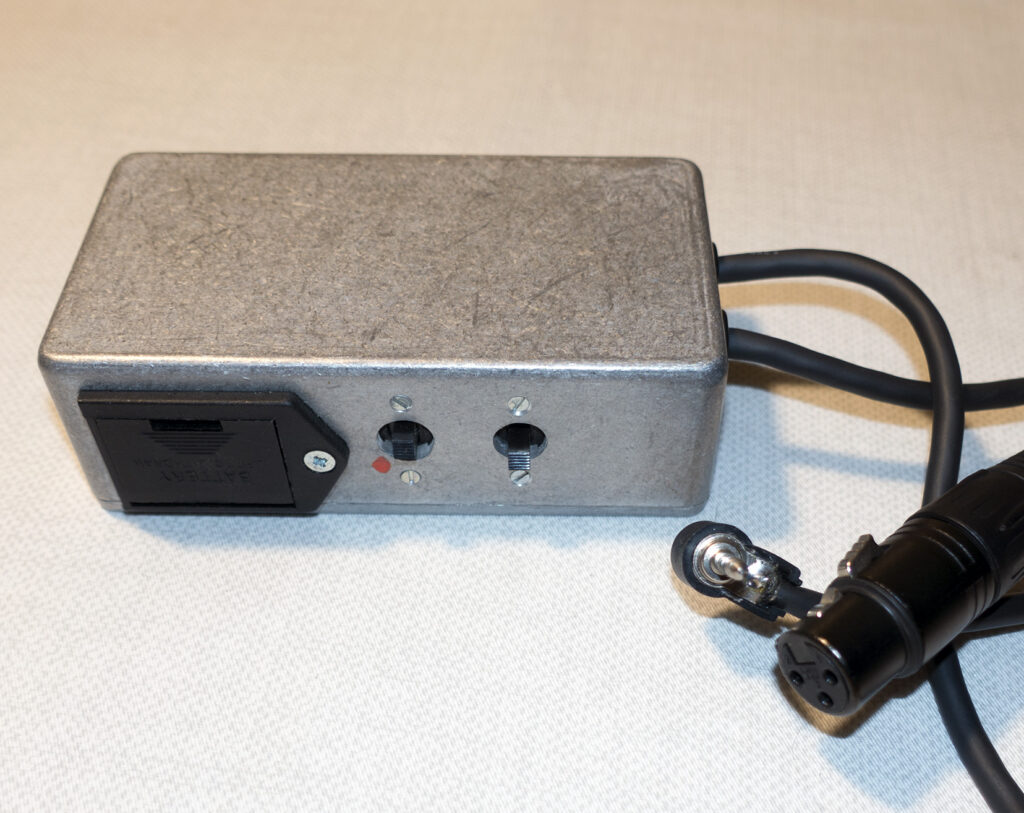
The microphone preamplifier built by Klas Strandberg to Sten Wahlström’s specifications
Of course, nowadays there are more compact and perhaps higher-performance alternatives, such as this Triton preamplifier.
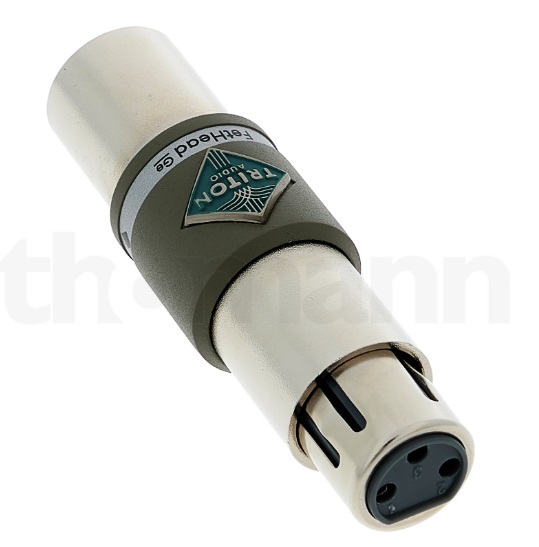
Aquatic Warbler
This is a very rare recording to be made in Italy. The Aquatic Warbler, Acrocephalus paludicola, is rarely found in Italy and is present only during migrations, both spring and autumn. I recorded this subject on 21 April 2000 at the Palude of the Busatello, Gazzo Veronese, Verona – Italy – using a Telinga Twin Science parabolic microphone and a Sony MZ R50 Minidisc recorder.
Until the end of the 1980s, the species was regularly found during the spring period (see the PDF below), with some subjects singing between the last ten days of April and the first ten days of May. Since then its presence has become increasingly rare. The last report dates back to April 21, 2000, and this recording proves its presence.
Questa è una registrazione particolarmente rara da effettuarsi in Italia. Il Pagliarolo, Acrocephalus paludicola, si rinviene raramente in Italia ed è presente solamente durante le migrazioni, sia primaverile che autunnale. Questo soggetto l’ho registrato il 21 aprile 2000 presso la Palude del Busatello, Gazzo Veronese, Verona – I – utilizzando una parabola Telinga Twin Science e un registratore Minidisc Sony MZ R50.
Fino alla fine degli anni ’80 la specie si rinveniva regolarmente durante il periodo primaverile (Vedi il PDF sopra), con qualche soggetto in canto tra l’ultima decade di aprile e la prima decade di maggio. Da allora la sua presenza è divenuta sempre più rara. L’ultima segnalazione risale proprio al 21 aprile del 2000, e questa registrazione ne testimonia la presenza.

Commenti recenti